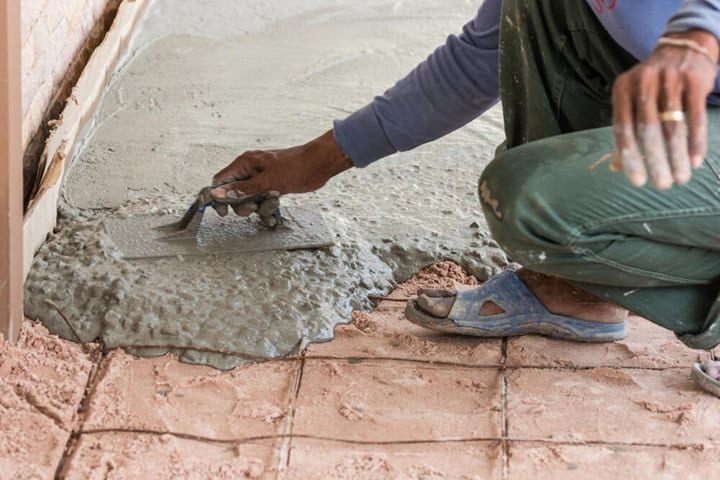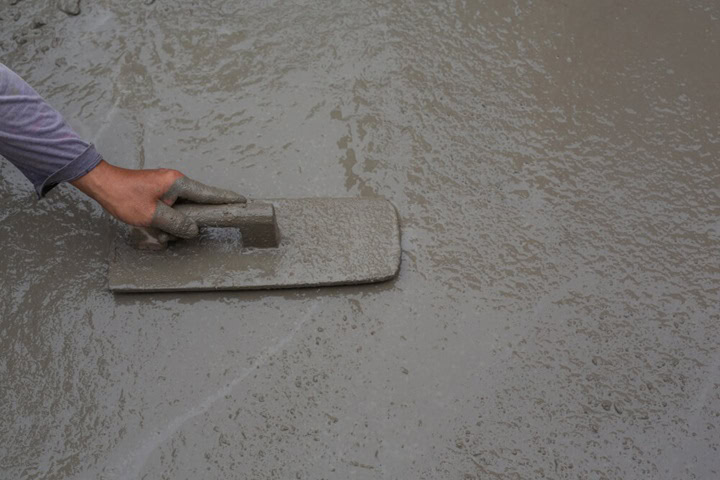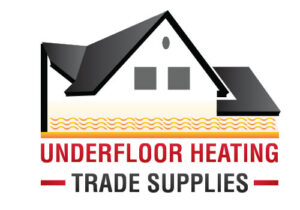The best screed for underfloor heating can determine the quality and performance of the system heating. Check out which screed for underfloor heating is right for you and your home.
Screed is an essential item to use when installing underfloor heating to ensure that it performs efficiently. However, there are numerous screed products on the market that many homeowners and DIYers may be unsure of which one to use. In this article, you will learn about the best screed for underfloor heating so that you can delineate the good from the great, the dry from the liquid, how self levellers work, and more!
Key points:
- Understand the difference between wet and electric UFH (Under Floor Heating) systems.
- Learn about self-levelling and dry screed options.
- Get insights on optimal screed thickness for efficient heat distribution.
- Discover which flooring materials work best with your screed.
- Gain practical installation tips to elevate your underfloor heating perimeters.
Types of Underfloor Heating Systems
Underfloor heating systems (UFH) can drastically improve the comfort of any home, utilising either hydronic (water) or electric systems.
Wet underfloor heating circulates heated water through durable pipes laid beneath the floor, ensuring an even distribution of warmth suitable for larger areas.
On the other hand, electric UFH systems use cables to generate heat, more suited to smaller spaces like bathrooms due to their lesser efficiency.
Choosing the right system depends on your space and heating requirements, and can affect how you want your underfloor heating to perform efficiently.
Preparing the Subfloor
The first step in installing an underfloor heating system involves preparing the subfloor, which may be a concrete slab or beam and block construction.
Essential layers such as a waterproof membrane and thermal insulation boards (like polystyrene or mineral wool) are laid down to optimise heat retention. A vapour barrier may also be added to protect against moisture. Following this, UFH pipes or cables are securely attached using clips, setting the stage for the screed to be applied.
Selecting the Best Screed for Underfloor Heating

For an even heat distribution, the thickness of the underfloor heating screed is crucial to determine the performance of the heating system.
Traditional sand and cement screeds should ideally be 65-75mm thick to cover the heating elements properly. However, when using advanced screeds with fibrous additives, which improves strength and durability, a minimum thickness of 50mm can suffice.
These specifications ensure that the heat from the UFH system is efficiently transmitted upwards into the room.
Traditional Dry Screeds
Dry screeds are a typically modern and conventional choice, particularly suited for smaller or residential spaces.
This type of underfloor heating screed is crafted by blending cement and sand in ratios ranging from 1:3 to 1:5, with water and fibre additives mixed in to aid durability and prevent cracking. To accommodate modern construction timelines, various additives might be incorporated to accelerate the drying process.
Proper mixing and compaction are crucial to avoid potential damage and ensure longevity. The addition of fibres and other additives can enhance the screed’s properties, including reducing the risk of cracking and shortening drying times. This type of screed is manually levelled using a straight edge, known as a screed bar, and can be finished smoothly using a plastic float and trowel.
Self-Levelling Screeds
In contrast to dry screeds, self-levelling screeds, often referred to as liquid screeds or flowing screeds, offer a more advanced solution for larger spaces, such as industrial or commercial environments.
This type of screed consists of calcium sulphate, sand, water, and specific chemicals, creating a mixture that can be poured or pumped directly onto the floor area. It naturally spreads to create a level surface without manual intervention, simplifying installation and reducing labour costs.
Benefits of Liquid Flowing Anhydrite Screed
When it comes to selecting the best screed for underfloor heating, liquid anhydrite screed stands out due to its superior thermal conductivity.
- Quicker drying: This type of screed not only facilitates a quicker room warm-up but also reduces energy consumption, thus lowering operating costs. Its fluid nature allows for a quick application over large areas, making it an ideal choice for both new builds and renovations.
- Speedy construction: Liquid anhydrite screed can be walked on within 24 to 48 hours of application, significantly speeding up the construction timeline by allowing other trades to proceed without delays.
Overlays
Underfloor heating overlays present a swift, efficient alternative to traditional screed methods. These systems are made up of thin-profile boards that are pre-routed and ready for the installation of heating pipes.
Typically laid directly onto an insulated existing floor and bonded together, these overlays can drastically reduce installation time. They are an ideal solution for projects requiring quick turnarounds without the need for extensive levelling work.
However, for floors that do require levelling, a thin layer of liquid screed can be applied underneath the overlay to ensure a flat surface, offering a seamless base for any final floor covering.
Choosing the Right Flooring
The type of flooring used over UFH is pivotal in optimising its efficiency.
Materials like porcelain or ceramic tiles and certain composites are preferable due to their high thermal conductivity, which increases the heat distribution of the UFH system. Wood can also be used with UFH if installed correctly, either as a floating floor or by adhering directly to the base with appropriate adhesives. It is essential to adhere to the flooring manufacturer’s guidelines to ensure compatibility and performance.
Read our detailed flooring guide articles to learn more about the best flooring for underfloor heating.
Installation Tips

To ensure the successful operation of an UFH system alongside your screed layout, several installation and maintenance practices must be observed:
- Maintain awareness of the maximum floor surface temperature, especially when installing tiles over the screed.
- It’s strongly recommended to insulate both the primary pipework and manifold assemblies.
- Apply accurate labelling to all components of the UFH system to facilitate efficient inspections and maintenance.
- Position joints between the manifold and pipework above the screed level to simplify maintenance.
- Install all external doors and windows prior to any UFH system to ensure the building is watertight and protected from frost.
- Arrange the pipework evenly across the floor, adjusting spacing near room perimeters to offset increased heat loss in these areas; ensure insulation extends from the floor to the wall edges.
- Care should be taken to account for any installations that penetrate the floor, such as plumbing or electrical conduits.
- Underfloor heating manifold assemblies should be easily accessible and properly labelled to facilitate maintenance and adjustments.
- Adequate insulation is necessary around the perimeter of the room and beneath the UFH pipes to minimise heat loss in homes. The layout of the pipes should be planned to provide even heat distribution, with adjustments made for external walls where heat loss is greater.
Hiring a Professional with Underfloor Heating Trade Supplies
For those unfamiliar with the complexities of installing UFH and screed, professional installation is highly recommended. At Underfloor Heating Trade Supplies, we will ensure that your underfloor heating system is installed correctly, saving both time and costs that might arise from potential errors. Ensuring the system is correctly installed from the start will prevent issues that could lead to significant disruptions and additional expenses, ensuring that you get the best value for money with your radiant heating system.
Further reading:
For more detailed specific on underfloor heating and how you can make the most of your system, try these articles:
- Secure and optimise your heating system to its full potential by discovering the best adhesives for underfloor heating.
- How thick is underfloor heating? Can it be affected by how much screed, adhesives, and self levellers that you use? Find out now.
- Prepare your home for colder weather by knowing how long it takes for underfloor heating to warm up.
FAQs
What type of screed is best for underfloor heating?
Liquid screed is often considered the best type for underfloor heating as it provides excellent thermal conductivity and a more even heat distribution.
How thick should the screed be over underfloor heating?
The recommended thickness of screed over underfloor heating pipes is typically between 50mm to 75mm.
What is the difference between traditional screed and liquid screed for underfloor heating?
Traditional screed is a sand and cement mixture that is manually mixed and applied, drying slowly and potentially unevenly. Liquid screed is pre-mixed and poured, offering a quicker, more uniform dry with better thermal conductivity.
Can underfloor heating crack screed?
Yes, if not properly installed or if the heating is turned on too soon after laying the screed, underfloor heating can cause the screed to crack due to rapid or uneven temperature changes.
How long after screed can you turn on underfloor heating?
It is typically recommended to wait at least 28 days after laying screed before gradually turning on underfloor heating to allow the screed to properly cure and minimise the risk of cracking.
Sources
Eco-Home Essentials. (2021) Vapour Barrier Or Vapour Control Layer? [online] Available at: https://www.eco-home-essentials.co.uk/vapour-barrier.html [accessed 10/09/24]
Beyond Flooring. (2023) What is a subfloor and why is it important? [online] Available at: https://www.beyondflooring.co.uk/what-is-a-subfloor-and-why-is-it-important/ [accessed 10/09/24]
